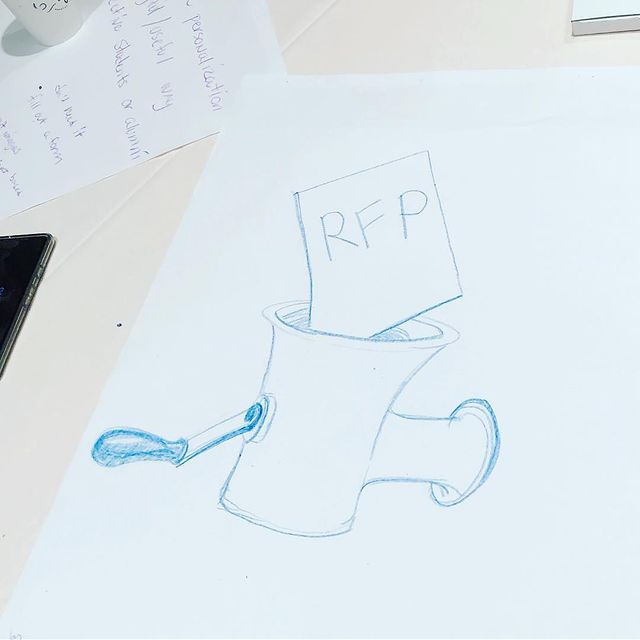One of my co-leads for DrupalCon Seattle’s Higher-Education Summit proposed a simple question that revamped our event’s structure: “In a perfect world, what and how could we change our event?”. Driving that premise was a desire to bring authentic, realistic, and tangible feedback and knowledge for our attendees by our attendees – to use the summit’s physical co-locating of university contacts across the world to pass along knowledge, insights, and best-practices in the moment. That’s where the Solution Room succeeded beyond our expectations.
https://www.instagram.com/p/BwDbbzGAGTP
Our summit has experimented with opt-in traditional roundtable formats in previous years to varying levels of success. Roundtables were structured around singular subject-matter-experts and topics per time-slot. Feedback had been consistent on where it could be improved: (1) roundtables became unstable and unusable as the number of participants increased, and (2) formalizing knowledge from the roundtable into permanence (like Google Docs) was not guaranteed.
With DrupalCon Seattle’s Higher-Education Summit, another summit lead researched on similar roundtable alternatives. And the description of the Solution Room caught our collective eyes with its scope, goal, and refreshing change:
Typically lasting between 90-120 minutes and able to handle hundreds of participants, The Solution Room is designed to provide peer-supported advice on individuals’ most pressing problems.
Each participant is given time to think of a challenge they are facing. A human spectrogram can be carried out to demonstrate how difficult people feel their challenges are to overcome. Another can be done to show the years of experience participants in the room have to offer each other.
Participants are then divided into groups of 6-8 and each person takes it in turns to present their problem and have it brainstormed by the group in 7-minute cycles. Groups share round tables with paper cloths that they can write on. A final spectrogram maps the shift in the way participants now feel about their respective challenges.
So, we did the thing and implemented the Solution Room into our schedule.
Results
How did it go?
https://www.instagram.com/p/BwDbGozgM03
https://www.instagram.com/p/BwDbmIWg_b6
https://www.instagram.com/p/BwAqGPpglhe
https://www.instagram.com/p/BwAoaZTgMbr
Participants loved the Solution Room.
We, as summit organizers, got to hear the conversations, topics, and solution-brainstorming happen at each table during each time-slot.
Other summit and event organizers poked their head in, and even joined impromptu problem-solving roundtable sessions.
I liked taking a chance on breaking it up this year. The gamble paid off.
Anonymous feedback
This was the best higher-ed summit that I have attended.
Anonymous feedback
I was afraid of the solution room at first, but it ended up being the best part of the summit.
Anonymous feedback
Our process
Three steps helped to take the Solution Room and bring it to life.
First, embrace creativity.
We empowered attendee creativity with presentation sticky paper attached to each and every seat and an assortment of crayon colors.
Papers and crayons were used by attendees to jot notes, frame their own discussions, or visualize problems or solutions. Or to draw beautiful pictures.
Second, steer the crowd.
We managed our attendees’ expectations by setting goals up-front and early and setting aside team in our afternoon schedule for each aspect of the Solution Room.
Time-slots were scheduled for attendees to:
- be placed into a random (new) table for the Solution Room as they returned from lunch.
- think about a technical problem they’re facing at work.
- move between each table member at pre-designated times.
Beyond that, there were no goals. Or expectations. Or takeaways. It was up to the crowd to self-steer their way to success.
Third, evolve the unfamiliar.
We reached out to the Solution Room designers through Twitter for any additional documentation or timekeeping tools that could help with event organization. We were rewarded with a macro-enabled spreadsheet that calculated our time slots and streamlined our own Solution Room interpretation.
We also role-played the Solution Room process through each of the steps to understand the takeaways and expected goals for each time slot, so that each Summit organizer would be armed with knowledge and guidance to steer the Solution Room format to completion.
We tinkered the format to eschew the metric-driven introduction and conclusion perspective analysis in lieu of informal transition periods of reflection and feedback. By then, and as we expected, most folks were ready for Happy Hour.
What’s next?
Attendee feedback and formal survey results will drive our changes for DrupalCon 2020’s Higher-Education Summit.
From vendors to university staff, all attendees I spoke with spoke positively and enthusiastically about the Solution Room.
2020 spells improvement, and further evolution.
